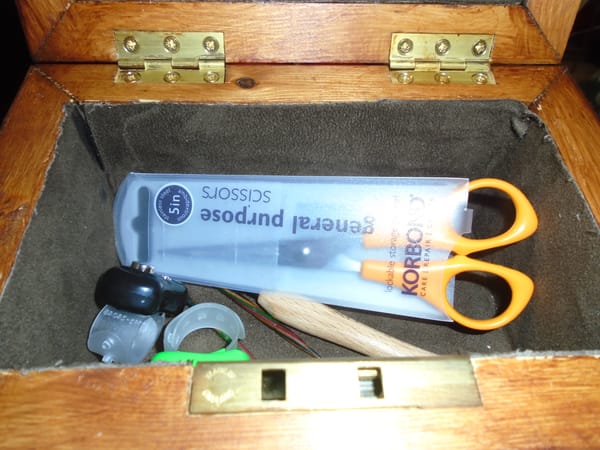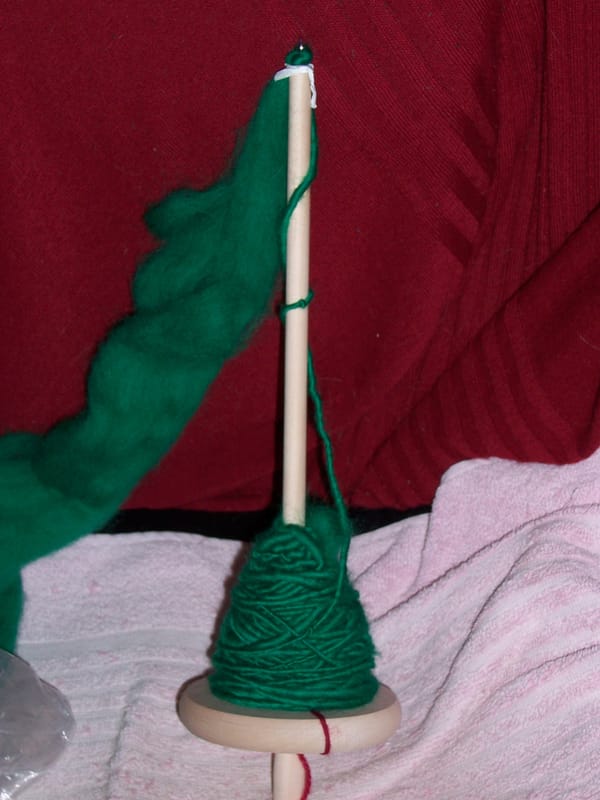Lord High Substitute
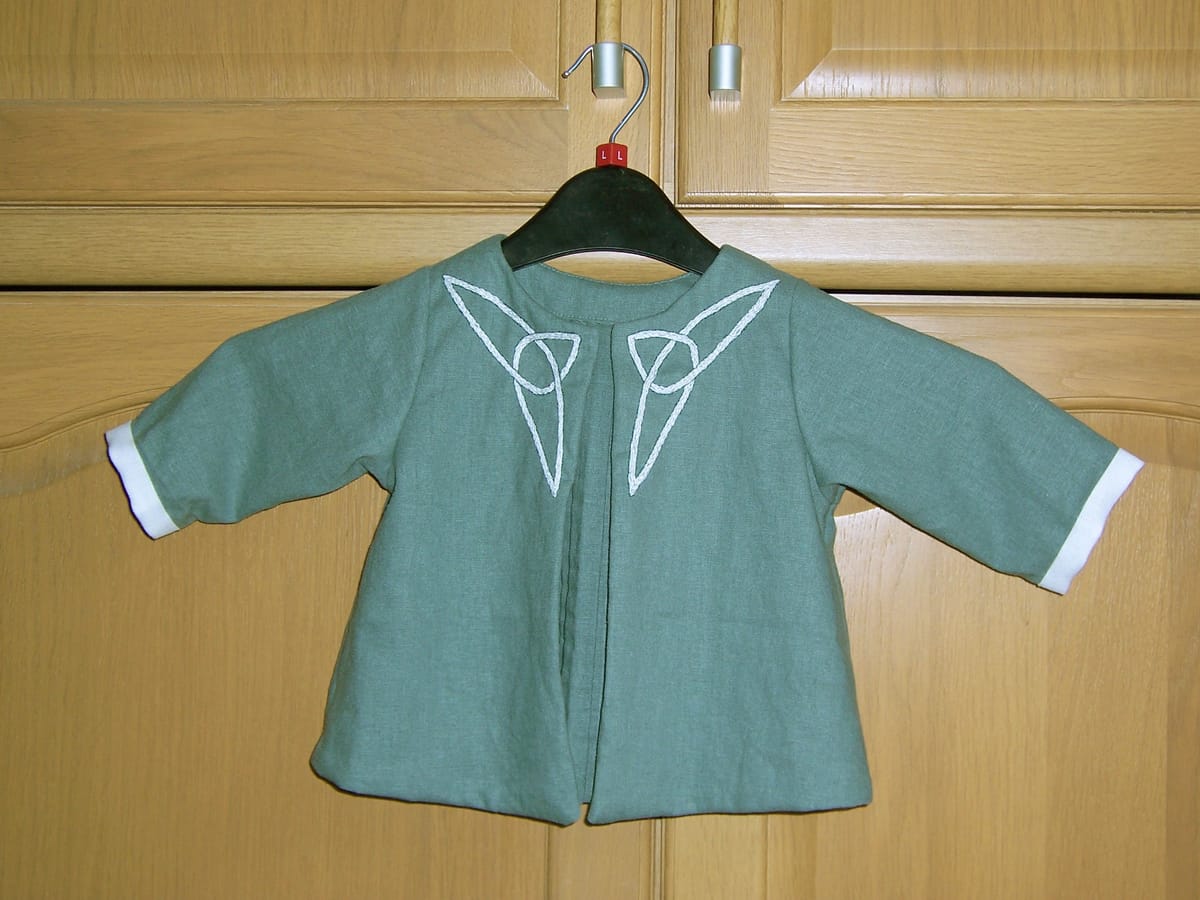
A top-notch professional singer can sing through anything short of laryngitis without wrecking their voice, or even sounding particularly off (though they might have a bit of trouble with their high notes and have to transpose down a little). I once heard d'Artagnan singing Handel in London, and I had no idea there was anything the matter with him; since I know his voice so well, I did think he sounded very slightly muffled, and I thought that perhaps the acoustic was a little unfriendly in the tenor range. (I should have known he knows how to deal with unfriendly acoustics; he can make his voice ring in Salisbury Cathedral, which has a surprisingly poor acoustic.) But then I went and found him during the interval, and it turned out that he had such a bad cold he could barely talk above a whisper.
But, inevitably, laryngitis does occasionally happen, and it happened to d'Artagnan a couple of days before he was due to sing some quite complicated Buxtehude. So, on the night before the concert, I got an e-mail from him to inform me that unfortunately he was in no fit state to sing, but he'd arranged a substitute, who was a young Canadian tenor, and he thought I would probably like him.
I was disappointed, but consoled myself with the fact that if d'Artagnan rated this chap so highly, he was going to be worth a listen. And, indeed, he was. He was very good indeed. (Not quite up to d'Artagan; but then I've never heard any tenor who is. But you can be extraordinarily good and still not quite up to d'Artagnan.) So, after the concert, I went and found him and told him so.
This is one of the delights of baroque concerts. They're usually fairly small, and if you want to, you can generally go and talk to the performers afterwards. I mean, you just try doing that at Glyndebourne. Anyway, we had a very nice chat, and we ended up staying in touch. I did a bit of work on his website for him, and a few weeks after the concert he let slip the fact that he'd just walked in there and sight-read the complicated Buxtehude. The bass had handed him the score a few hours before the concert. To hear him, you'd have thought he'd been rehearsing it for weeks.
Time passed, and this young man and his wife had a baby. Lots of young couples do this, but in their case it was a cause for special celebration, because they had had enormous difficulty in conceiving. If that happened now I'd be getting out the knitting needles as a matter of course, but, as described in yesterday's post, I couldn't knit at the time; so I decided to make a jacket for the new arrival.
I can't remember what pattern I used, but it was quite heavily hacked. For a start, I'm pretty sure I added the contrast cuffs. I also added a lot of pleats in the back to make it a bit roomier. Here's a view of the inside:

And then, of course, there was the embroidery, which was designed to fit the jacket. It's a Celtic Trinity knot; the basic shape is easy enough to do, but anchoring it to the three points (centre neckline, shoulder point, and a corresponding point on the centre front line) turned out to be quite tricky. Here's a close-up:
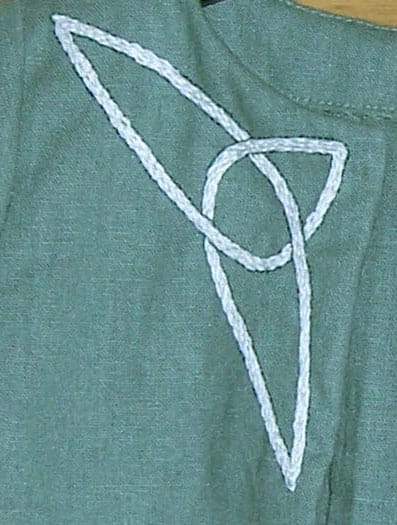
The fabric was linen. I was in the SCA at the time, so I had a fair bit of linen; I made the bliaut in red and had very little left over. I can't remember now what I used this green for, but this time there were enough remnants to make this little jacket. The white was probably not SCA-related, but left over from my poet shirt, which I made at about the same time (it had hand-finished eyelets, rather than inserted metal ones, and it laced up with kumihimo cord). The embroidery was done in ordinary stranded cotton. I can no longer swear to the technique I used, but I think what I did was to draw the design on tissue paper and stitch the outline over it, then carefully remove the paper and stitch the filling.
The jacket was hugely appreciated at the time, but unfortunately we lost touch (not entirely sure what happened there), and when I tried to contact him again I got no reply. I now suspect it was because his old e-mail is no longer working (or he doesn't check it, which is the same thing), because I happened to mention him to d'Artagnan a little while ago, and he said brightly, "Oh, yes! Do you know he's now a policeman?"
I blinked. "A policeman?" I echoed. "What a waste of a fine voice!"
Oh well. Should you ever happen to run across a policeman (I think in Scotland, but I'm not sure if he's still there) with a particularly fine tenor voice, please say hi from me.
And, on an unrelated note, you know I said I didn't think I still had a photo of my portable tablet weaving arrangement? It turns out I did. I found it the other night. Here you go:
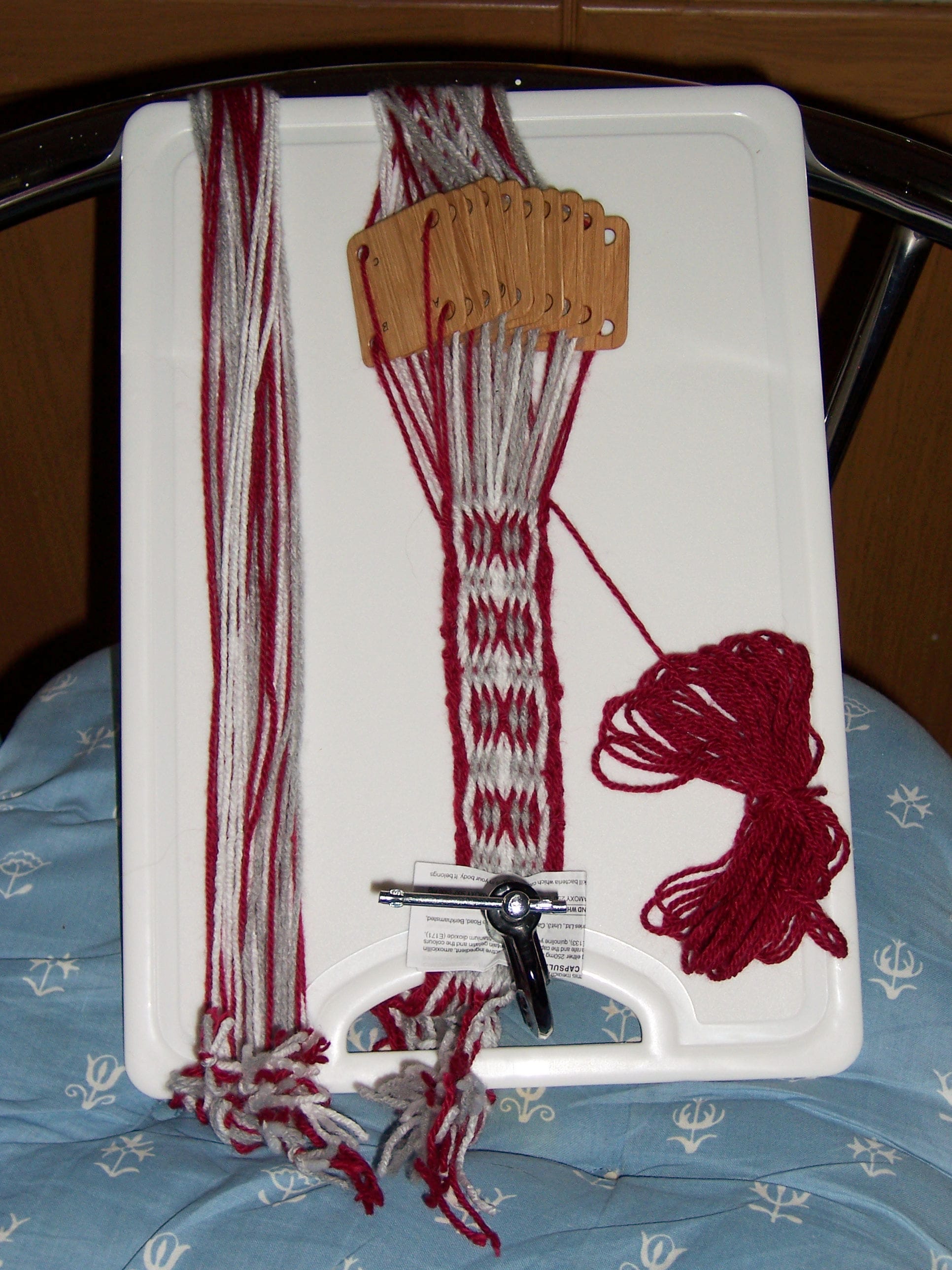
I wish I'd found this photo at the time; it's great because it actually shows you the tablets and the weft thread passing through the gap. This design is a little more complex than the one I showed you earlier, but all the tablets still rotate together. I suspect, from the look of it, that you do four (or possibly eight) quarter turns one way and then the same number the other way, so the warp threads don't get tangled. The yarn is ordinary double knitting, which isn't the best thing for tablet weaving because it's a bit fuzzy (if you're going to use double knitting, a smooth cotton is your best bet), but since this was just a practice piece it didn't really matter.
I'm trying to think how old that baby would be now. I'm reckoning at least in her teens.

